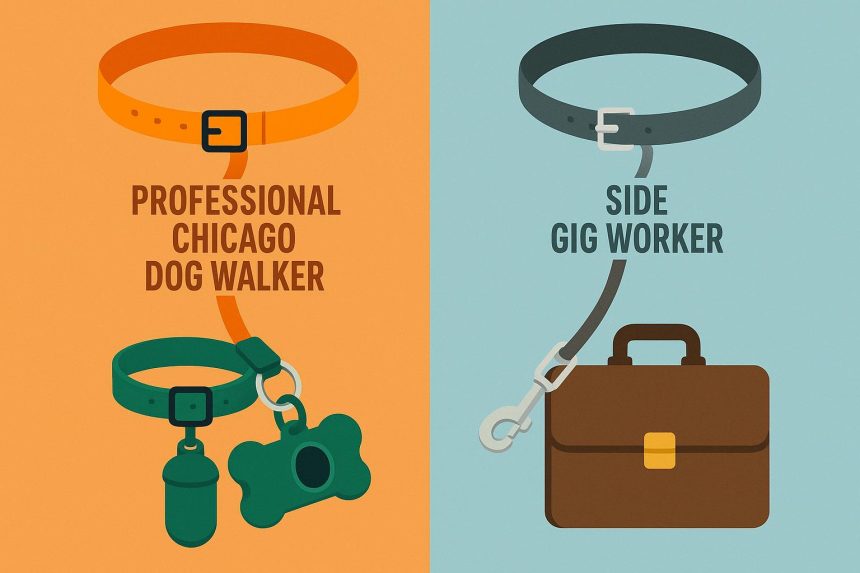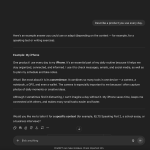Your dog doesn’t care about your calendar; it cares about the person who shows up. In Chicago, packed sidewalks, crowded transit and sharp weather swings—plus popular routes like Lincoln Park and the lakefront—make steady dog care a practical need for owners and pets. Professional walkers offer formal training, liability coverage and regular schedules; side-gig walkers often juggle other jobs, which can produce uneven timing, less experience and surprise cancellations.
For owners balancing work, family and commuting, small choices around training, consistency and safety add up to calmer mornings and fewer late-night texts from neighbors. Comparing credentials, insurance, client feedback and the way a walker handles city distractions can show if visits are steady or sporadic. Knowing what to ask and what a routine looks like makes picking a walker straightforward — and puts the next decision within reach right away.
Training and Commitment Levels
Pro dog walking services treat outings like scheduled client work. Formal training in canine first aid, leash and pack management, reading body language, and pacing dogs by breed and age helps. They’re used to crossing busy streets, handling recall failures, supervising multi-dog walks, keeping logs and backup coverage so cancellations don’t leave pets unattended.
Side-gig walkers often learn on the job, juggling shifts or classes, which can mean shorter, irregular routes, limited behavior training, and surprise changes when other obligations pop up. A quick review of recent client references plus a concise training summary reveals whether a walker fits an energetic dog’s needs and eases the transition to consistency.
Consistency and Relationship With the Dog
A steady face at the door calms leash anxiety. Repeated visits let dogs learn timing, tone and tiny cues; familiarity with quirks—reactivity to bikes, favorite sniff spots—lets walkers match pace and smooth transitions from home to street. That stable relationship reduces leash pulling, improves recall confidence, and makes vet visits smoother.
By contrast, rotating walkers introduce varying handling styles, timing and cue words, which can make dogs hesitant or reactive. Dogs adapt faster when a primary handler tracks behavior and keeps notes. A short trial series helps owners observe consistency.
Reliability and Scheduling
Morning rhythm in the city depends on predictable visits. Professional services lock schedule blocks, maintain backup staff, and use apps that record start/stop times and GPS paths. Clients often receive confirmations, easy rescheduling policies, and proactive alerts for weather or delays — practical measures that keep a tight calendar from disrupting a pet’s day.
Side-gig walkers often balance shifts or classes, leading to last-minute swaps, delayed arrivals, or skipped walks that disrupt a dog’s routine and stress owners. A useful selection check: a three-day trial with fixed arrival windows and daily confirmation texts helps reveal scheduling habits and supports steady care.
Safety and Liability
A leashed dog pulling at a crowded Chicago crosswalk tests a walker’s preparedness. Professional outfits typically carry liability insurance, bonding, background checks, and written emergency protocols. They document vaccinations, train staff in canine first aid, and maintain GPS logs and incident reports, so accidents trigger a clear claims process and paid care.
Side-gig walkers frequently lack business insurance, leaving owners to absorb vet bills or legal exposure after bites or vehicle incidents. Contracts and waivers vary; some handlers rely on auto or homeowners policies that don’t apply. Holding a walker to the standard of showing a business insurance certificate and a written emergency plan before booking is a practical safeguard.
Added Value Beyond Walking
A quick door-side check, water bowl refilled, paws wiped, mail brought in, often separates a basic walk from a full-care visit. Professional walkers leave short notes about appetite and energy, give scheduled medications, bring packages inside, swap damp bedding, and handle small cleans or crate refreshes, which cuts late-night calls and shortens recovery after rough days.
They send time-stamped GPS routes, two or three photos or a brief video, and a simple checklist noting feeding, mood, bathroom breaks, and any odd behavior; side-gig workers rarely provide that level of documentation. Request a sample visit report and a one-week checklist to compare documentation detail.
Professional dog walking in Chicago separates itself through training, steady schedules, and documented safety practices that protect both pets and owners. Liability coverage, background checks, and reliable reporting give owners confidence that routines will not fall apart under pressure. Side-gig walkers may cost less, but uneven timing and limited preparation often introduce stress. Owners can evaluate services by requesting insurance certificates, sample reports, and running a short trial. Clear expectations transform uncertainty into dependable care, aligning each walk with a dog’s temperament, health needs, and the household’s daily rhythm.
Lynn Martelli is an editor at Readability. She received her MFA in Creative Writing from Antioch University and has worked as an editor for over 10 years. Lynn has edited a wide variety of books, including fiction, non-fiction, memoirs, and more. In her free time, Lynn enjoys reading, writing, and spending time with her family and friends.















